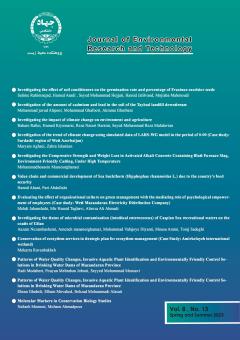-
-
-
Open Access Article
1 - Coagulant recovery from waterworks sludge by acid digestion method
S Elaheh Mahdavian Ahagh Fariba OstovarCoagulation is a process that increases the tendency of small particles in an aqueous suspension to attach to one another and to surfaces such as the media in a filter bed and is applied through mixing coagulants such as aluminum sulfate (alum), ferric chloride and poly MoreCoagulation is a process that increases the tendency of small particles in an aqueous suspension to attach to one another and to surfaces such as the media in a filter bed and is applied through mixing coagulants such as aluminum sulfate (alum), ferric chloride and polyaluminum chloride with raw water. Sludge containing coagulant is formed after coagulation and through sedimentation of natural turbidity. Presence of high amounts of coagulant in waterworks sludge, increases environmental risks and disposal costs. Coagulants in sludge have high economic value. Therefore, if these coagulants recover, not only sludge disposal risks but also expenses related to supply of fresh coagulant in water or wastewater treatment plant may decrease. In this paper, researches conducted by acid digestion method for coagulant recovery from waterworks sludge are investigated. Amounts of coagulant recovery, advantages and disadvantages and economic aspects of this method are studied. Results of the investigation showed that using sulfuric acid is the best option for conducting acid digestion process because it is cheap and available. Moreover, if the purpose of recovering process is to achieve a recovered coagulant with a similar quality to the commercial ones, acid digestion method will not satisfy related standards. Manuscript profile
List of Articles S Elaheh Mahdavian Ahagh
-
The rights to this website are owned by the Raimag Press Management System.
Copyright © 2017-2024


